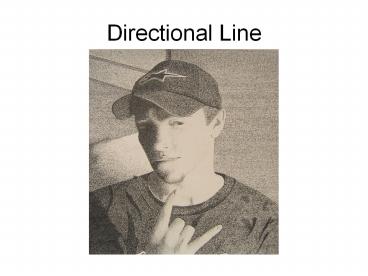Directional Line - PowerPoint PPT Presentation
1 / 22
Title:
Directional Line
Description:
Directional Line Albrecht Durer 1471-1528 1515 British Museum, London Hatching The most basic method of creating value in ink drawing is linear hatching. – PowerPoint PPT presentation
Number of Views:200
Avg rating:3.0/5.0
Title: Directional Line
1
Directional Line
2
(No Transcript)
3
Albrecht Durer1471-15281515British Museum,
London
4
Hatching
- The most basic method of creating value in ink
drawing is linear hatching. - Fine parallel lines fill an area, so that from
just a slight distance, we have the illusion of
value. The closer the lines are, the less white
paper shows, and the darker the value appears. - Heavier line weight (pressing more firmly or
using a bigger nib) also gives a darker
appearance.
5
Scumbling and Random Hatching
- Scumbling, often called the 'brillo pad'
technique, uses layers of small calligraphic,
scribbled marks to build up value and texture.
Varying the direction and shape adds more
interest than a simple circular scribble. Random
hatching uses layers of short, straight marks.
Various textures result depending on whether
these short hatches are applied vertically, at
right angles, following a contour or at random
angles.
6
Contour Hatching
- This technique is often used in figure drawing,
with the direction of line helping to suggest the
cross-contours of the body. Hatching which
follows a contour can also help to make objects
appear more three-dimensional.
7
Stipple is a drawing method employing dots
rather than long lines. Stippling uses tiny dots
to create value. The closer together the dots,
the darker the tone. Larger dots create a denser
tonal value more quickly, but can look coarse.
8
Cross Hatching
- Crosshatching uses layers of hatching placed at
an angle. Usually, the first layer would be
vertical, the next horizontal, the next at
forty-five degrees, and so on. This methodical
approach can look a little mechanical, so artists
often use variation in direction to add interest.
9
Portrait Drawing using pen and ink as its
medium.
10
Value is the degree of light and dark in a
design.
11
Form can be achieved by the use of line.
12
Landscapes, cityscapes and seascapes are all
subject matters.
13
Contrast refers to the differences in value and
texture.
14
The surface quality of this drawing has
simulated textures.
15
Space in a artwork that is positive can be
filled in with line.
16
Gallery
17
(No Transcript)
18
(No Transcript)
19
(No Transcript)
20
(No Transcript)
21
Subjects in Art The Figure- From ancient Greece
until today, the figure has been one of the most
important subjects in artin painting, drawing,
and sculpture. Portraits-If a work of art depicts
the personal characteristics of a particular
individual or group of individuals, it is a
portrait. Self-Portraits-The artist Albrecht
Durer was the first to paint a self portrait.
Rembrandt painting 29 self-portraitsone almost
every year of his adult life. Still Life-A
painting or drawing of objects of things that
cannot move is called a still life. Landscapes-A
work of art which shows the features of the
natural environment. Hudson River school artists
Thomas Cole and Thomas Morans paintings of the
western U.S. probably influenced Congress to
establish the National Parks System. Cityscapes-Vi
ews of City Street, plazas, courtyards,
buildings, and activities in an urban
environment. Animals-Animals of all kinds have
been portrayed by artists in many cultures, both
in realistic and abstract styles. Genre
Subjects-are representations of subjects and/or
scenes from everyday life usually painted
realistically. The word genre refers to the
common or ordinary. Narrative-this is art that
tells a story. It usually depicts a realistically
painted event with interaction and activity.
22
- Religious Subjects-Many artworks depict religious
figures as subjects. - Historical subjects-An artist may choose an
historical subject to tell about or record people
or events from history. - Literary Subjects-Subjects taken from writing
such as sources from the Bible, or from famous
tales, myths and legends. - Social Comment-artists also create works of art
to visually express their opinions about
political or social issues relevant to their
lives. - Abstraction-it is the simplification of subject
matter into basic and often geometric shapes.
Abstract works are not realistic. Subject matter
may be recognized, or it may become so simplified
that it looses its identity and the design and
arrangement of shapes become the subject matter. - Non-Objective -works that are composed of colors,
lines and shapes that are fully abstract, or not
representational of anything. The actual subject
matter, rather than trees, flowers, or people,
might be color or the composition of the work
itself. - Expressionistic -a work that communicates to the
viewer an artists personal or emotional feelings
about a subject.































